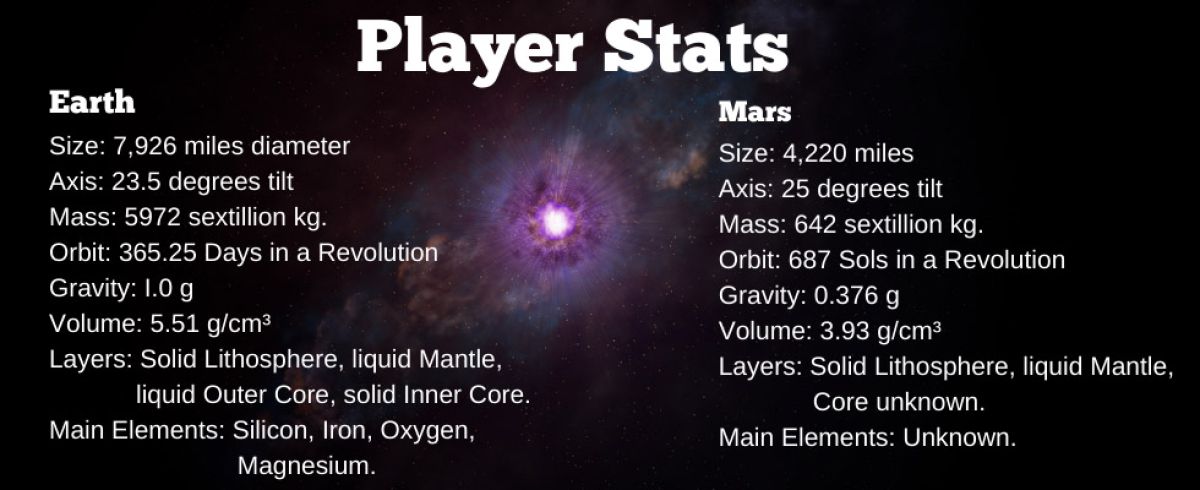
Mars vs. Earth: Terrestrial Planetary Boxing
Kelly Smith's sixth grade science students have been studying Mars. Among the concepts they explored was comparing Mars to Earth. Students took the assignments in a variety of creative and engaging directions. Following is one delightful example.
Pre-match Commentary
By Simon Nelson '27
In the blue corner, we have the heavy-weight champion of Terrestrial Planetary Boxing! The ‘small’ blue dot, Earth! Breaking the scale at 5972 sextillion kilos, this young upstart hasn’t given up an inch of ground with the skills of its new coach, the Moon.
And in the red corner, a scrappy underdog that everyone’s rooting for, the lightweight competitor Mars! The last match for this planet didn’t go very smoothly, as Mars succumbed to solar radiation. Can the planet bounce back from its injuries before Earth can exploit them? Stick around to find out tonight, on Terrestrial Planetary Boxing.
First, let’s take a look at the stats. The elephant in the room is that Earth, at 5900 sextillion kilos, is an order of magnitude heavier than its counterpart. If Earth can land a good left hook, then it's all over for Mars. M: Mass: 642 sextillion kg E: 5972 sextillion kg
But that won’t be easy for the behemoth. In a past fight, Mars dodged and weaved so much that Venus lost its balance in an upset of the tournament rankings. The red planet has perfected its 687 Sols per Revolution wide-orbit strategy to compensate for the lack of defense its weak poles provide. M: 687 Sols in a Revolution E: 365.25 Days in a Revolution
Apparently, Mars’s secret diet regimen lacks the Nickel to block blows effectively, and it certainly doesn’t have even half the reach of Earth’s 7,926 miles, seeing as its diameter is miniscule. M: Solid Lithosphere, liquid Mantle, Core unknown E: Silicon, Iron, Oxygen, Magnesium Main Elements: Silicon, Iron, Oxygen, Magnesium.
Another viable route for the underdog to take could be using Earth’s own 1 g superior gravity against it. Let’s just not forget that a Mars-sized object can take a chunk out of Earth. E: I.0 g M: 0.376 g
Now, the primary strategy we’ve seen from Earth is to start out the match aggressively with a head-on charge, and wrap things up early. As long as Mars can take advantage of its off-kilter axis, the planet will end up on the floor. Seeing as Earth’s higher density should be enough to weigh it down, Mars could capitalize and keep it down. The only problem is, this is a high risk/high reward, as once Mars is on top, it could be torn asunder by the magnetic pull of Earth’s core.
(Please see accompanying stats in the graphic above.)